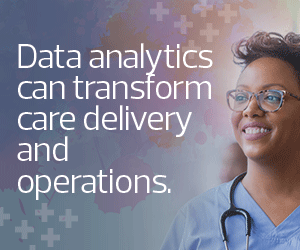The major cloud providers offer data management and analytics tools, including cloud-based software that extracts and integrates data and allows users to build reports on dashboards.
Agencies that prefer to do it in-house will need servers, storage, a database or data warehouse solution, and tools for data integration and extracting insights. Software vendors also offer comprehensive on-premises data management and analytics tools, Nadkarni says.
The technology an agency uses will depend on its specific needs. “You can find applications that provide a comprehensive workflow for you, or you can build them on your own,” Nadkarni says.
LEARN MORE: How big data, analytics, AI and more improve outcomes.
How the DOJ is Fighting Healthcare Fraud
At the DOJ’s Health Care Fraud Unit, eight data analysts assist prosecutors with identifying, investigating and prosecuting healthcare fraud cases.
The analytics team uses multiple databases and tools to conduct its analysis, including the Microsoft Power BI data visualization tool, i2 Analyst’s Notebook and Microsoft Excel. The team also uses multiple internal and external models to detect healthcare fraud, and it maintains files related to its analysis on in-house department servers.
The Centers for Medicare & Medicaid Services provides direct access to its portal so the Health Care Fraud Unit’s data analysts can look at its information. The analytics team also collaborates with federal data teams, including the Department of Health and Human Services and the Drug Enforcement Administration.
“Our team builds models analyzing hundreds of different variables that can indicate fraud,” Foster says. “But data is not the truth. While it can point us in the right direction, we have to go out and investigate.”
The DOJ uses two types of models. In one, it finds providers suspected of fraud by examining the characteristics of medical professionals and others who have been prosecuted for healthcare fraud. Through analytics, investigators find current providers with the same characteristics, Foster says; they then seek national outliers and rank providers with a scoring system.











